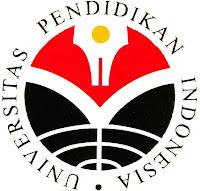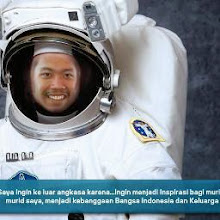Disusun Ulang Oleh:
Arip Nurahman
Department of Physics
Faculty of Sciences and Mathematics, Indonesia University of Education
and
Follower Open Course Ware at Massachusetts Institute of Technology
Cambridge, USA
Department of Physics
http://web.mit.edu/physics/
http://ocw.mit.edu/OcwWeb/Physics/index.htm
&
Aeronautics and Astronautics Engineering
http://web.mit.edu/aeroastro/www/
http://ocw.mit.edu/OcwWeb/Aeronautics-and-Astronautics/index.htm


The multiverse (or meta-universe, metaverse) is the hypothetical set of multiple possible universes (including the historical universe we consistently experience) that together comprise everything that exists and can exist: the entirety of space, time, matter, and energy as well as the physical laws and constants that describe them. The term was coined in 1895 by the American philosopher and psychologist William James.[1] The various universes within the multiverse are sometimes called parallel universes.
The structure of the multiverse, the nature of each universe within it and the relationship between the various constituent universes, depend on the specific multiverse hypothesis considered. Multiverses have been hypothesized in cosmology, physics, astronomy, religion, philosophy, transpersonal psychology and fiction, particularly in science fiction and fantasy. In these contexts, parallel universes are also called "alternative universes", "quantum universes", "interpenetrating dimensions", "parallel dimensions", "parallel worlds", "alternative realities", "alternative timelines", and "dimensional planes," among others.
- Impossible world
- Modal realism
- Omniverse
- Roger Penrose
- Parallel universe (fiction)
- Philosophy of physics
- Philosophy of space and time
- Reductionism
- Simulated reality
- The Fabric of Reality
- As contrary concepts
Cosmology in medieval Islam
Fakhr al-Din al-Razi (1149–1209), in dealing with his conception of physics and the physical world in his Matalib al-'Aliya, criticizes the idea of the Earth's centrality within the universe and "explores the notion of the existence of a multiverse in the context of his commentary" on the Qur'anic verse, "All praise belongs to God, Lord of the Worlds." He raises the question of whether the term "worlds" in this verse refers to "multiple worlds within this single universe or cosmos, or to many other universes or a multiverse beyond this known universe."
Wikipedia
References
- ^ James, William, The Will to Believe, 1895; and earlier in 1895, as cited in OED's new 2003 entry for "multiverse": "1895 W. JAMES in Internat. Jrnl. Ethics 6 10 Visible nature is all plasticity and indifference, a multiverse, as one might call it, and not a universe."
- ^ Tegmark, Max (May 2003). "Parallel Universes". Scientific American.
- ^ Tegmark, Max (January 23 2003) (PDF). Parallel Universes. http://space.mit.edu/home/tegmark/multiverse.pdf. Retrieved 2006-02-07. (PDF)
- ^ a b c d "Parallel universes. Not just a staple of science fiction, other universes are a direct implication of cosmological observations.", Tegmark M., Sci Am. 2003 May;288(5):40-51.
- ^ Max Tegmark (2003). "Parallel Universes". In "Science and Ultimate Reality: from Quantum to Cosmos", honoring John Wheeler's 90th birthday. J. D. Barrow, P.C.W. Davies, & C.L. Harper eds. Cambridge University Press (2003). arXiv:astro-ph/0302131. Bibcode 2003astro.ph..2131T.
- ^ Zyga, Lisa "Physicists Calculate Number of Parallel Universes", PhysOrg, 16 October 2009.
- ^ Tegmark, Max, The Interpretation of Quantum Mechanics: Many Worlds or Many Words?, 1998. Deutsch, David, David Deutsch's Many Worlds, Frontiers, 1998.
- ^ Tegmark, Max (January 23 2003) (PDF). Parallel Universes. http://www.wintersteel.com/files/ShanaArticles/multiverse.pdf. Retrieved 2006-02-07. (PDF).
- ^ J. Schmidhuber (1997): A Computer Scientist's View of Life, the Universe, and Everything. Lecture Notes in Computer Science, pp. 201-208, Springer: IDSIA - Dalle Molle Institute for Artificial Intelligence
- ^ J. Schmidhuber (2000): Algorithmic Theories of Everything arXiv.org e-Print archive
- ^ J. Schmidhuber (2002): Hierarchies of generalized Kolmogorov complexities and nonenumerable universal measures computable in the limit. International Journal of Foundations of Computer Science 13(4):587-612 IDSIA - Dalle Molle Institute for Artificial Intelligence























